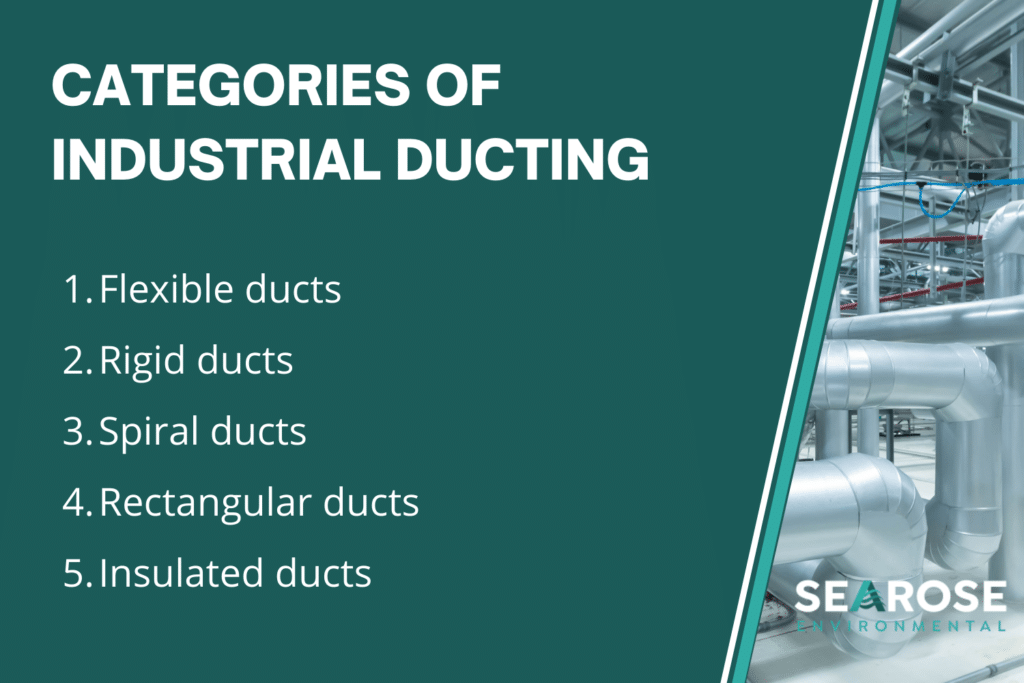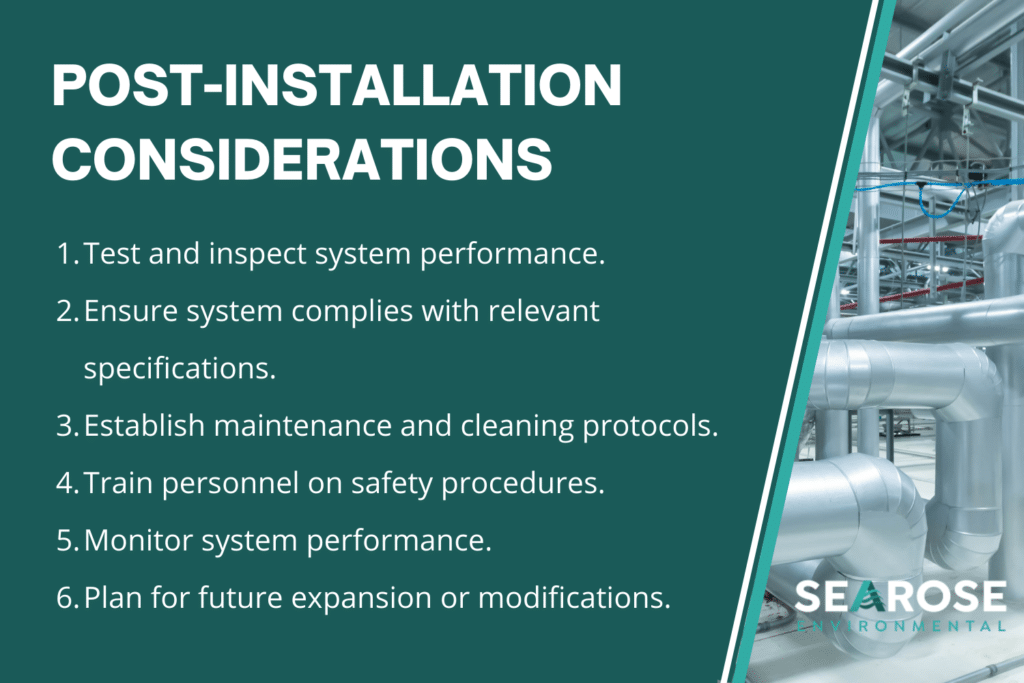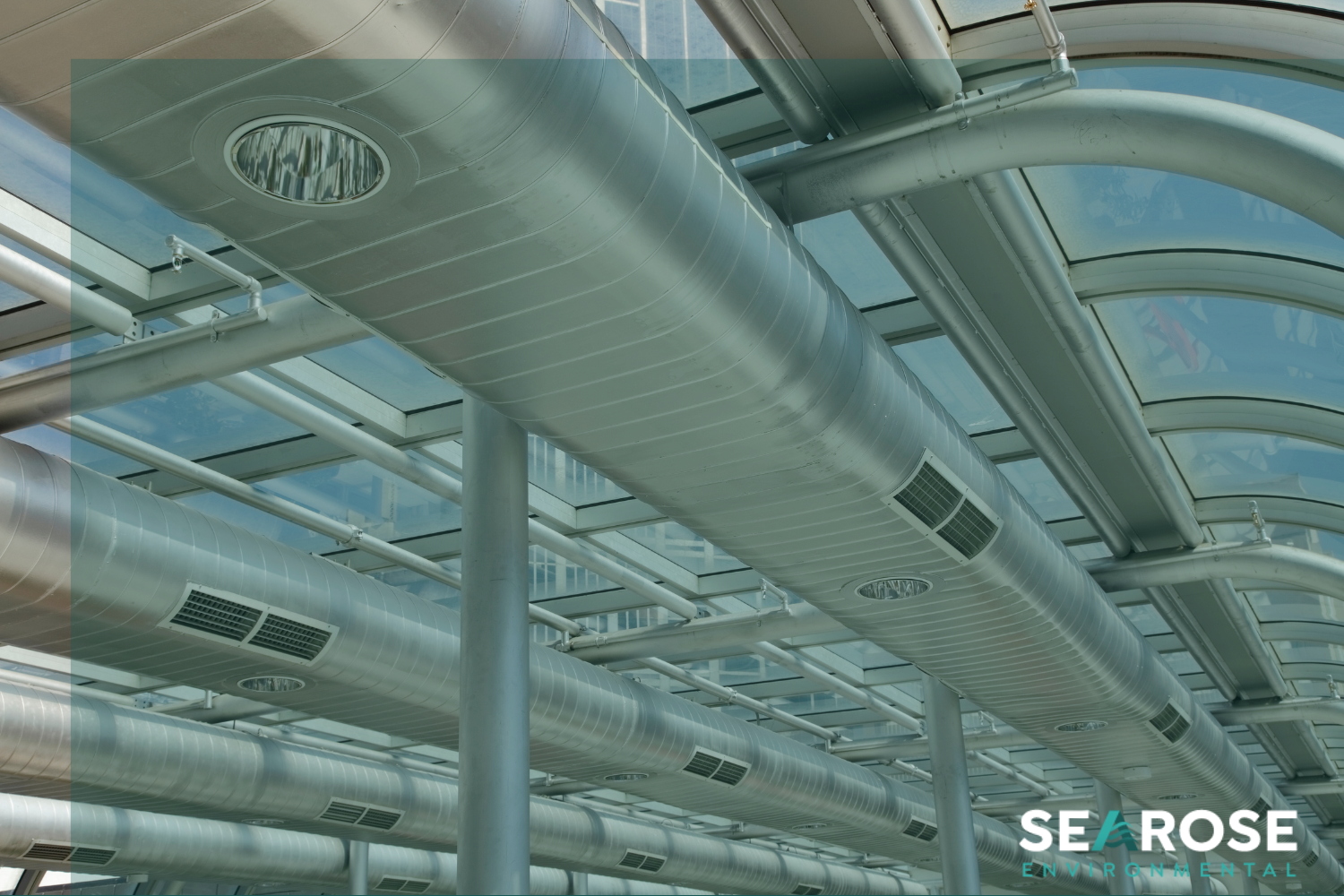Industrial ducting is a system of pipes or channels that transport air, dust, or fumes. Ducting is vital in manufacturing, mining, agriculture, construction, and other industries. Ducting is essential for maintaining a safe and healthy work environment, improving air quality, and ensuring efficient operations. Installation projects may be challenging due to complex building layouts and the wide selection of materials and components. Ducting must also comply with regulations and legislation, as well as your project timelines and budget.
In this article, we’ll explain how industrial ducting works, how to design and install your ducting system, and the most important factors to consider throughout the process. We’ll also guide you on how to maintain your industrial ducting and ensure it helps you meet your project’s goals promptly and safely.
Your Guide to Industrial Ducting Installation
Project Planning
Before beginning your ducting, make a detailed plan for your project, including its scope and critical objectives. Assess your site, considering its available space, required airflow, and environmental conditions. It’s essential to consider safety and regulatory requirements, including local building codes, industry standards, and Occupational Health Services regulations. Also, consider the timeline, which may be affected by the availability of personnel, equipment, and materials. Finally, decide whether you need to consult professional HVAC installation services before you begin.
Designing Your Ducting System
Once you’ve established a plan, it’s time to start installing your ducting system. Choose the suitable layout and configuration that will optimise the flow of air and materials through your facility. Ensure your system is as energy efficient as possible. When duct sizing, account for thermal expansion and vibration control — your system must be able to withstand changes in temperature and mechanical stress.

Industrial ducting usually falls into five main categories:
- Flexible ducts — made of PVC, fabric, or rubber, these ducts are used for temporary applications.
- Rigid ducts — made of steel or aluminium, these are more durable and used in industrial applications that need to withstand high temperatures and corrosion.
- Spiral ducts — these are made of spiral wound metal strips, known for strength, airflow, and minimal air leakage. Usually used for HVAC systems, dust collection, and fume extraction.
- Rectangular ducts — made of steel or aluminium, with a rectangular cross-section, these are widely used in commercial and industrial applications due to their space-saving design.
- Insulated ducts — with an extra layer of insulation (usually fibreglass or foam) that minimises heat transfer, conserves energy, and reduces noise, these ducts are excellent for HVAC systems due to their temperature control and noise reduction.
Choose which type of ducting you’ll use based on your budget and the conditions in your project’s area. Consider whether you’ll need your ducting to withstand high temperatures, corrosion, and weathering. Add insulation to your ducts if you want to conserve energy and reduce noise. For better control and adaptability, incorporate high-quality dampers and transitions.
When you’ve chosen the material, make sure you can adapt it to your design. Do you have a lot of straight lengths that your ducts will follow, or will you have to account for duct transitions, elbow, bends, enlargements, and more variables? When you’ve got a solid design, you can start installing.
Preparing for Installation
Once you’re ready for installation, ensure proper equipment and personnel are in place by preparing your work site. You’ll need lifts, cutting tools, welding equipment, as well as a reliable crew of trained technicians and project managers. Your site should be clear and safe; all relevant materials and components should be on hand. Establish clear communication channels and project management protocols — now, you’re ready to go.
Installing Your Ducting System
When installing ducts, you can use a flanged, welded, clamped, or slip-fit system, depending on the pressure level your ducts will face. Your technicians should use the appropriate tools to align duct sections and components and securely fasten the connections through welding, flanging, clamps, or slips.
Conduct safe tests for quality control. Test multiple areas of the system to ensure that the design is transporting the air, dust, and fumes properly. It’s critical that your ducts are leak-free and meet project specifications. Seal, weld, and finish your system as required.
Depending on the scale and location of your project, you may have to schedule inspections for local authorities and industry experts to confirm that your system is secure, stable, and meets all safety and regulatory requirements.
Post-Installation Considerations
Once you’ve installed your ducting system, carry out the following steps:
- Perform post-installation testing and inspection to verify system performance.
- Verify that your system performs well and complies with the relevant specifications.
- Establish maintenance and cleaning protocols to ensure the longevity and efficiency of the system. This involves cleaning filters, inspecting connections, and checking for wear and tear.
- Train personnel on the proper use and care of the system. Create strict safety procedures and operational guidelines.
- Monitor system performance and make necessary adjustments such as adjusting dampers, modifying airflow, or making repairs.
- Consider future expansion or modification needs.
It’s crucial to ensure that your system can accommodate changes in your facility in the future — your ducts should be adjustable if new sections or modifications are required as your project progresses. Once you’ve completed all the necessary steps, you can get on with your project and meet your goals, satisfied that you have an efficient and durable ducting system in place.

Final Advice on Industrial Ducting Installation
Successful industrial ducting installation requires careful planning, design, and execution. Follow our guide to ensure you meet all your goals with your project. Just remember — before you begin the installation, define your project’s scope, your site’s needs, which materials and components you want to work with, and any legal requirements and legislation.
If you require help with ducted air conditioning installation or other industrial ducting projects, Searose Environmental provide leading installation and ducting services across Brisbane. We provide the best specialised installation solutions to suit your company’s needs. We can also set up scheduled maintenance to ensure your ducting system performs efficiently and effectively. Get in touch today to get started.
